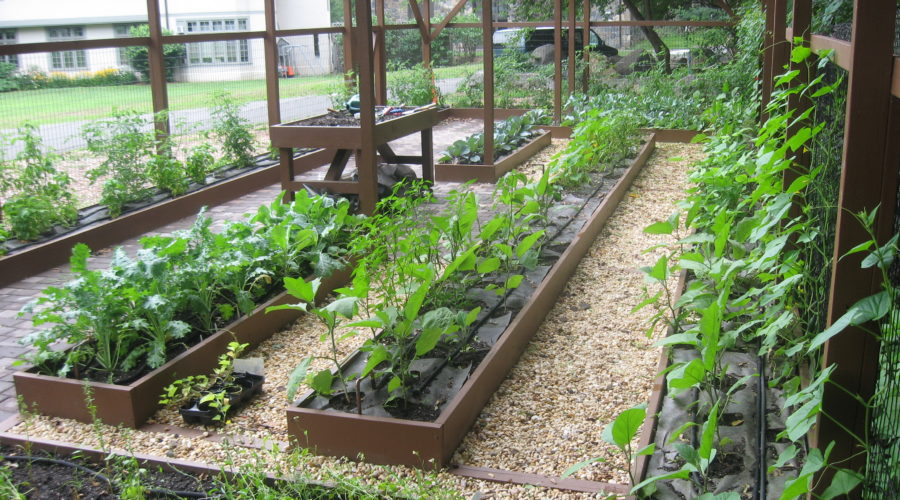Irrigating Your Home Garden
There is more than one way to skin a rabbit…but we aren’t talking about that today. Today it’s all about gardening (one of my favorite things ever).
More importantly, this is all about how to water/irrigate your garden. It can be hard to strike a balance between too dry and way-too-wet.
Soil that is too wet encourages disease on the plants, while soil that is too dry will roast their roots.
What’s the best way?
Honestly I think it’s all about what works for you, the size of your garden, and your budget. I’ve had friends that have succeeded with each of these ways of irrigating your garden.
So, without further ado, let’s get into it.
Furrows
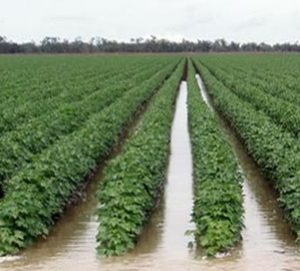
Basically, shallow trenches in between the raised beds where your plants reside. This is an old-school farming technique that has worked for a real long time.
You want to keep your beds 1 to 3 feet apart from each other (generally the further apart they are the more water you use). This creates little furrows in between each row. You fill the furrows completely with water, wait for it to soak in, and then poke the dirt to make sure the water has been absorbed.
Furrows totally work, but they can be a little inefficient. Why? Well, the beginning of a bed usually gets more water than the end of a row. And water gets wasted through evaporation while it’s sitting in the furrow. And you’re also spending a lot of time walking around and filling the furrows—moving your hose around the plants.
Basins
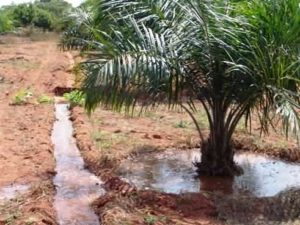
These are kind of like furrows, except you create a circle around a vegetable plant that you can fill with water. You want it to be 2 ft in diameter around the plant. The same kind of efficiency problems with furrows also follow with basins.
Hose
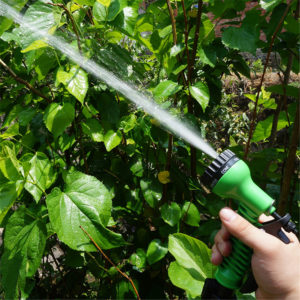
Obviously, you can drag your hose around and water plants one by one. I wouldn’t recommend this style unless you’re just watering a small bed or a few plants. That way it’s more effective to make sure your plants are getting enough. In that case, watering canisters are also efficient and nice.
One thing my friend, Trish, recommends, is to rest the hose running at a drizzle near the bottom of each plant until the ground is soaked down till about 6 inches.
Sprinklers
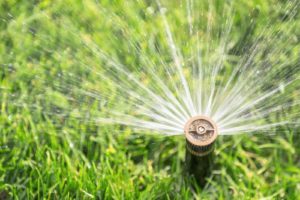
Sprinklers can be very effective and nice. They’re especially effective in sandy soil that absorbs water effectively. It can also be a big time-saver if you have a lot to water.
If your garden is on a slope, or you know that your soil has a hard time absorbing water, your plants might not get enough to drink with this method. Maybe use it in conjunction with another method to make sure your plants get enough to drink.
Some people like to install sprinkler systems to come on at certain times and water their plants. This is a very easy route to go if you’re gone a lot and don’t have time to water. It’s a little less efficient though because a lot of water hits the leaves of the plant and just evaporates.
Drip Irrigation
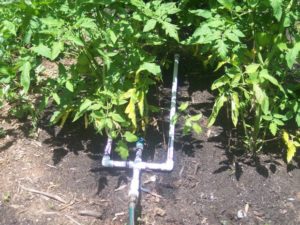
Drill holes in plastic pipes (very affordable) that all connect with each other in order to set up a drip irrigation system. Connect the pipes to a water supply (usually a faucet with a hose) with a pressure regulator. Line up the pipes with the plants so that the water drips to your plant’s roots.
This is an effective way to water if you have a lot of land to cover and not a lot of time. It’s quite effective and efficient.
Soaker-Hose Irrigation
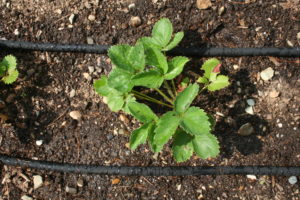
This happens to be the method I use. It has worked well for my mid-range garden.
You use puncture tiny holes into a hose and snake the hose through the rows or around the curve or plants to water. This applies the water directly to the ground and the roots, making it more efficient as it reduces the evaporation if the water was just falling on the leaves.
I prefer the soaker-hose irrigation system to the drip irrigation because it takes less time to set up, it has less parts, and it’s cheaper.
